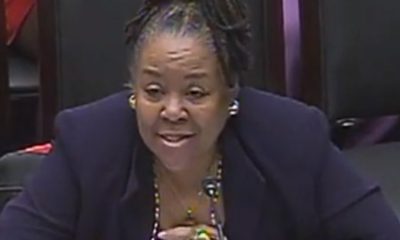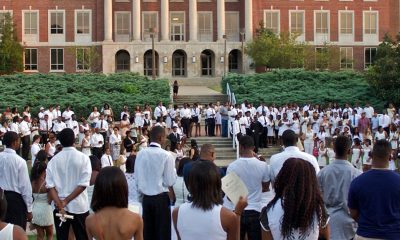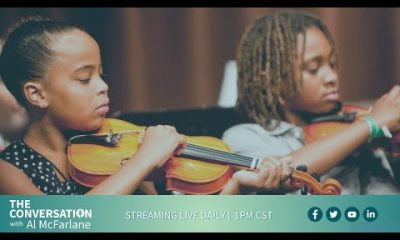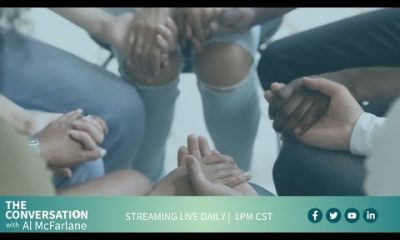Commentary
COMMENTARY: Cheyney headed in the right direction
THE PHILADELPHIA TRIBUNE — The university hopes to raise about $4 million over the next few months
By Irv Randolph
Founded in 1837, Cheyney has historically given African Americans a chance at education. Alumni include civil rights activist Octavius V. Catto; Bayard Rustin, a chief organizer of the 1963 March on Washington; and “60 Minutes” broadcast journalist Ed Bradley. (In full disclosure, Robert W. Bogle, chair of Cheyney’s council of trustees, is the president and CEO of The Philadelphia Tribune.)
In recent years, the nation’s oldest historically Black college has struggled with plummeting enrollment, financial woes and the threat of losing accreditation.
Walton has announced a credible plan intended to balance the school’s budget and lure new top-tier students. His plan should be given the chance to work.
The plan includes an ambitious fundraising campaign and sweeping changes to the school’s business model.
“We will have a balanced budget,” he said, vowing to make it happen by June 30.
The specifics of the revenue-generating plan include the following:
Epcot Crenshaw Corp., a West Chester-based company that develops technology to solve environmental problems, will establish research labs, greenhouses and an aquaponics facility where Cheyney students can get real-world experience in emerging environmental technology.
Thomas Jefferson University is committing to construction of a medical facility on the campus. A joint research project has already begun between Thomas Jefferson University and Cheyney that focuses on health disparities in the Philadelphia region. The collaboration is also designed to help Cheyney graduates enter postgraduate studies at Jefferson. Jefferson will also place a medical facility on campus to give practical experience to Cheyney students interested in health sciences.
Cheyney is not without its doubters and critics.
Daniel Greenstein, chancellor of the Pennsylvania State System of Higher Education, told state senators that Cheyney was likely to lose accreditation and looked as if it would be short on cash by as much as $10 million. He said the university may have to operate as an unaccredited institution, possibly offering career training.
Without accreditation, the school would be ineligible for federal and state financial aid, which many of its students depend upon.
Kenn Marshall, a spokesman for the state system, told the Philadelphia Inquirer on Tuesday that the chancellor stands by his remarks at the Senate hearing.
“We’re going to continue to work with Cheyney and support them,” Marshall said. “Obviously, President Walton has a plan, and we hope it’s successful.”
During a meeting with the Tribune’s editorial board last week, Walton said he expected the university to retain its accreditation and asserted that much of the $10 million funding hole Greenstein referenced is a cash-flow problem he expects to be resolved.
Walton said the university hopes to raise about $4 million over the next few months under a new campaign to make sure the budget is balanced.
There are clear reasons for hope that the university will be successful in meeting its financial goals.
Since June 2017, Cheyney’s new administration has made significant progress including attracting more academically prepared students, establishing a model to retain students and forming partnerships to provide students with more opportunities for internships and hands-on research experience. This fall there was a 33 percent increase over last fall in the number of applications received.
All indications show that Cheyney is moving in the right direction and has made substantial progress with its new leadership and vision. The university is too valuable to this region to fail. Through the progress it has made in such a short period of time, Cheyney is demonstrating that it has earned the right to maintain accreditation and support.
This article originally appeared in The Philadelphia Tribune.
Activism
Oakland Post: Week of April 24 – 30, 2024
The printed Weekly Edition of the Oakland Post: Week of April 24 – 30, 2024

To enlarge your view of this issue, use the slider, magnifying glass icon or full page icon in the lower right corner of the browser window. ![]()
Activism
Oakland Post: Week of April 17 – 23, 2024
The printed Weekly Edition of the Oakland Post: Week of April 17 – 23, 2024

To enlarge your view of this issue, use the slider, magnifying glass icon or full page icon in the lower right corner of the browser window. ![]()
Commentary
Opinion: Surviving the Earthquake, an Eclipse and “Emil Amok.”
Last Friday, a 4.8 magnitude earthquake shook New York City, reported as the “biggest earthquake with an epicenter in the NYC area since 1884” when a 5.2 quake hit. A bit bigger. The last quake similar to Friday’s was a 4.9 in 1783.Alexander Hamilton felt it — 241 years ago. That’s why New Yorkers were freaking out on Friday. They were in the room where it happens.

By Emil Guillermo
I’m a Northern Californian in New York City for the next few weeks, doing my one-man show, “Emil Amok, Lost NPR Host, Wiley Filipino, Vegan Transdad.”
I must like performing in the wake of Mother Nature.
Last Friday, a 4.8 magnitude earthquake shook New York City, reported as the “biggest earthquake with an epicenter in the NYC area since 1884” when a 5.2 quake hit. A bit bigger. The last quake similar to Friday’s was a 4.9 in 1783.
Alexander Hamilton felt it — 241 years ago.
That’s why New Yorkers were freaking out on Friday. They were in the room where it happens.
And it just doesn’t happen that often.
Beyonce singing country music happens more frequently.
When I felt New York shake last week, it reminded me of a time in a San Francisco TV newsroom when editors fretted about a lack of news an hour before showtime.
Then the office carpeting moved for a good ten seconds, and the news gods gave us our lead story.
On Friday when it happened in NYC, I noticed the lines in the carpeting in my room wiggling. But I thought it was from a raucous hotel worker vacuuming nearby.
I didn’t even think earthquake. In New York?
I just went about my business as if nothing had happened. After living near fault lines all my life, I was taking things for granted.
Considering the age of structures in New York, I should have been even more concerned about falling objects inside (shelves, stuff on walls) and outside buildings (signs, scaffolding), fire hazards from possible gas leaks, and then I should have looked for others on my floor and in the hotel lobby to confirm or aid or tell stories.
Of course, as a Californian who has lived through and covered quakes in the 4 to 6 magnitude range, I tried to calm down any traumatized New Yorker I encountered by taking full responsibility for bringing in the quake from the Bay Area.
I reassured them things would be all right, and then let them know that 4.8s are nothing.
And then I invited them to my consoling post-Earthquake performance of “Emil Amok, Lost NPR Host…”
It was the night of the eclipse.
ECLIPSING THE ECLIPSE
In New York City, the eclipse was about 90 percent visible. Good enough for me. Though a full solar eclipse is a celestial rarity, blockages of any sort aren’t generally celebrated. My one-man play is about growing up with the eclipsed history of American Filipinos and how I struggle to unblock all that.
For example, did you know the first Filipinos actually arrived to what is now California in 1587? That’s 33 years before the Pilgrims arrived in America on the other coast, but few know the Filipino history which has been totally eclipsed.
I was in Battery Park sitting on a bench and there was a sense of community as people all came to look up. A young woman sitting next to me had a filter for a cell phone camera. We began talking and she let me use it. That filter enabled me to take a picture of the main event with my iPhone.
For helping me see, I invited her and her boyfriend to come see my show.
Coincidentally, she was from Plymouth, Massachusetts, near the rock that says the year the Pilgrims landed in 1620.
In my show she learned the truth. The Pilgrims were second.
History unblocked. But it took a solar eclipse.
Next one in 2044? We have a lot more unblocking to do.
If you’re in New York come see my show, Sat. April 13th, 5:20 pm Eastern; Fri. April 19, 8:10 pm Eastern; and Sun. April 21st 5:20 pm Eastern.
You can also livestream the show. Get tickets at www.amok.com/tickets
About the Author
Emil Guillermo is a journalist and commentator. He does a mini-talk show on YouTube.com/@emilamok1. He wishes all his readers a Happy Easter!
-

 Community2 weeks ago
Community2 weeks agoFinancial Assistance Bill for Descendants of Enslaved Persons to Help Them Purchase, Own, or Maintain a Home
-

 Activism4 weeks ago
Activism4 weeks agoOakland Post: Week of April 3 – 6, 2024
-

 Business2 weeks ago
Business2 weeks agoV.P. Kamala Harris: Americans With Criminal Records Will Soon Be Eligible for SBA Loans
-

 Community2 weeks ago
Community2 weeks agoAG Bonta Says Oakland School Leaders Should Comply with State Laws to Avoid ‘Disparate Harm’ When Closing or Merging Schools
-

 Activism3 weeks ago
Activism3 weeks agoOakland Post: Week of April 10 – 16, 2024
-

 Community2 weeks ago
Community2 weeks agoOakland WNBA Player to be Inducted Into Hall of Fame
-

 Community2 weeks ago
Community2 weeks agoRichmond Nonprofit Helps Ex-Felons Get Back on Their Feet
-

 Community2 weeks ago
Community2 weeks agoRPAL to Rename Technology Center for Retired Police Captain Arthur Lee Johnson




















































